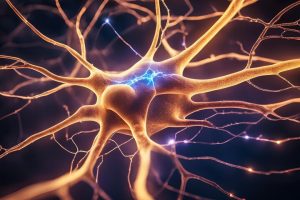Hormone levels fluctuate like the tides, rising and falling in carefully tuned cycles. These hormones not only influence the body, but can also enter the brain and affect the behavior of our neurons and cognitive processes. Recently, researchers at UC Santa Barbara used advanced laser microscopy techniques to observe how fluctuations in ovarian hormones affect both the structure and function of neurons in the hippocampus of mice, a brain region critical for memory formation and spatial learning in mammals. They found that hormone fluctuations during the mouse estrous cycle, a 4-day cycle analogous to the 28-day menstrual cycle in humans, strongly influence the shape and behavior of neurons in the hippocampus.
Insights into the Role of Sex Hormones in Brain Plasticity and Memory
“We have known for some time that ovarian hormones, particularly estradiol—a form of estrogen—have important effects on the structure and function of neurons,” said neuroscientist Michael Goard of UCSB, senior author of a study published in the journal Neuron. In the 1990s, ex vivo experiments were conducted on female rodent brain tissue taken at different stages of the estrous cycle. They found that during the “proestrus” phase – when estradiol levels peak – neurons in the hippocampus tend to form more dendritic spines, small protrusions that extend from the dendrites of neurons and serve as the primary site of connection between neurons.
“Until now, little was known about how the estrous cycle affects neurons in living mice,” said Nora Wolcott, lead author of the study. Thanks to modern microscopy techniques, Goard’s team was able to measure the structure and activity of neurons over several estrous cycles, gaining insights into the role of sex hormones in brain plasticity and memory.
The Rise and Fall of Dendritic Spines and their Influence on Brain Cell Function
The hippocampus is a region of the brain located deep within the mammalian brain that is primarily associated with memory and learning. Patients with lesions in the hippocampus are unable to learn new information or form new episodic memories. The hippocampus is also rich in receptors for sex hormones such as estrogen and progesterone, suggesting that sex hormones influence not only reproduction but also cognitive functions such as memory.
Building on previous studies, the researchers used two-photon laser scanning microscopy to track the formation and degradation of these dendritic spines in mice over several four-day estrous cycles. They observed many new spines during proestrus, which were then degraded over the course of the cycle until ovulation. These were not subtle changes – the density of the spines varied by 20 to 30% over the cycle, corresponding to thousands of synaptic connections for each neuron.
How do the ups and downs of the spines affect the function of brain cells? To find out, the scientists examined the action potential – the “firing” of neurons – and how the impulse spreads through the neurons. Normally, the dendrites receive the signal, which is then transmitted to the cell body and then to the axon. “However, the signal also travels back through the dendrites, where the nerve cell normally receives information,” said Goard. This retrograde signal is thought to play a role in learning and memory consolidation. The researchers found that during the peak estrogen level, the retrograde signal traveled further back into the dendrites, which they believe could have an impact on plasticity—the brain’s ability to form new neural connections. What are the functional consequences of increased dendritic spine density and feedback? One answer lies in the “place cells” or neurons in the hippocampus that fire when the animal is in a specific location in its environment – they help build mental maps and support spatial learning and navigation.
Understanding the Relationship Between Hormonal Fluctuations and the Brain Paves the Way for Personalized Medicine
To test the animals’ ability to learn and remember new locations, the researchers let them explore different environments while measuring the activity of neurons in the hippocampus. They found that place cells responded most reliably to familiar locations during the proestrus phase—the phase with high estradiol levels—and were most variable when estradiol levels were lowest. These findings from experiments in mice also have important implications for humans. In fact, co-author Emily Jacobs has found in her laboratory that endocrine rhythms in the menstrual cycle are associated with structural changes in the human hippocampus.
Hormonal fluctuations are typically associated with female mammals, but men also experience hormonal fluctuations, many of which act on similar receptors. For example, testosterone can be converted to estrogen through aromatization, where it acts on estrogen receptors in the hippocampus. This suggests that hormone-induced plasticity is a widespread phenomenon and underscores the importance of considering endocrine factors in neuroscience research. Understanding the relationship between hormonal fluctuations and the brain not only deepens our fundamental understanding of brain biology, but also opens up new possibilities for personalized medicine tailored not only to the individual, but also to the phase of the hormone cycle. According to the researchers, the realization that the brain physically changes in response to naturally occurring cyclical hormones challenges our understanding of mammalian cognition.






